In the world of game audio there’s often a need for the sounds of the earlier game consoles. Whether this is to help emulate a feeling of nostalgia of the 80s and 90s or to create all new styles of music with the older sounds, the tones of these classic consoles have had a persistent presence in the gaming world. This has been especially true with the rise of the indie game scene and the emphasis on the styles of the 8-bit and 16-bit eras.
Through the years there have been a number of software tools available to composers and audio designers for recreating these sounds. Programs like FamiTracker and Little Sound DJ have allowed composers to generate chiptune music, but they require considerable time to learn the various functions and limitations of the software. Meanwhile different FM synthesizers can be used to create sounds similar to the Sega Genesis, but often didn’t have the same limitations or imperfections of the sounds that you would hear on the original system hardware.
Now after many years of planning and development, Impact Soundworks, in collaboration with OverClocked Remix, has come forward with a collection of samples recorded from the systems themselves. The result is the sample library Super Audio Cart, which aims to provide a simple way of producing the authentic sounds of these consoles, while also presenting tools to let you do some new and complex things with the available instruments. I’ll be taking a look at the core functions of the library and examining how it stacks up against other methods of creating these sounds.
Super Audio Cart contains samples from the hardware of multiple systems including the Atari 2600, Commodore 64, Sega Master System, Game Boy, Nintendo Entertainment System, Sega Genesis, and the Super Nintendo Entertainment System. The initial patch that loads when you start up Super Audio Cart gives you the a solo NES pulse wave on the first layer. The library allows you to load up to four layers of instruments, each one from any console of your choosing, within one instance of Super Audio Cart. Each layer can even be assigned its own midi channel, making it easy to control each layer from a specific track within a host DAW (Digital Audio Workstation).
Getting to the specific instrument patches is fairly simple. There’s an entire “Authentic” category in the dropdown menu that allows you to select the game system and then the instrument preset that you’d like to load. The earlier game systems like the Atari 2600, Game Boy, and NES contain a selection of the various waves that the systems could produce. For example, the NES has a variety of Pulse Waves, a Triangle Wave, a Noise channel, and a handful of drum kit patches. The drum kits are based on the possible sounds that could be used through the system’s DPCM sample playback. As you would expect, since the Atari 2600 had severe hardware limitations there aren’t as many sounds available compared to the later systems. However there’s still a surprisingly good selection of samples from the system, particularly with the drum and sound effect kits.
Because the samples were recorded from the actual systems, the sounds come with all of the imperfections and quirks that result from generating the tones from the original sound chips. You can also toggle “Raw” mode on for each instrument to bypass any and all effects, so you can get a pure unaltered sound of the original sample. Although I found it a little odd using samples rather than a virtual synthesizer for these various wave forms, it was satisfying to hear the more authentic tones coming from the library. It absolutely engaged the nostalgia factor for me, but then that’s sort of the point. While it’s a different approach to creating retro chiptune tracks, the faithful reproduction of the original sound and ease of use feels like a fair trade-off.
The presets for systems like the Sega Genesis and SNES have to take a slightly different approach for their samples on Super Audio Cart. These systems were capable of sounds beyond the simple wave forms of their earlier counterparts. The Genesis used FM synthesis and PCM sample playback for its sound. Meanwhile, the SNES used no synth oscillators and relied on sample-based synthesis in the form of SoundFonts, which allowed for a unique collection sounds in each game. Since there are potentially an unlimited number of instruments that could be created on the hardware of these systems, the sounds representing the SNES and Genesis in Super Audio Cart are by necessity somewhat selective.
The solution for the SNES presets was to create samples that could be used by the original console. These are recreations of the samples played through the original hardware rather than literal rips of the SoundFonts. As a result, a lot of these end up being incredibly close imitations of the iconic instrument sounds from popular SNES games. Anyone familiar with the soundtracks to the early Square Soft games and Nintendo’s first-party titles will find a number of familiar sounding instruments in the SNES category of the “Authentic” patches. To the credit of Impact Soundworks, had I not known that these were recreations, I could have been easily convinced that these were the exact same samples from the original games. The presets are categorized by instrument type, so it’s fairly easy to search through the library and find the SNES sound that you’re looking for. You’ll find plenty of the iconic string, brass, guitar, percussion, and woodwind instruments available in the SNES “Authentic” patch category.
The Genesis similarly has a set of samples that are based on the more iconic instruments that we’ve all heard in the flagship games of the system. There are a number of instruments that are clearly based on the games like Streets of Rage and Sonic the Hedgehog. The preset names will often hint at this as well. Again, like the SNES samples, the sounds are categorized by instrument type and are easy to navigate. Because this is relying on samples rather than the Genesis sine wave operators, you don’t have the same amount of control over the instrument’s sound. I’m personally a fan of creating my own FM synth sounds for music projects, but at the same time FM synth can be a complicated and daunting affair, especially if you’re new to the technology. The trade off here is a much simpler and faster way to build pieces that have that iconic Sega Genesis FM sound. Those who aren’t very familiar with FM synth will without a doubt find this set of instruments a godsend for working on projects that need that Genesis sound.
Now if authentic emulation of retro game console sounds was all that the Super Audio Cart sample library was offering, I would give it a pass as a simple but slightly niche tool for retro game music creation. However, the software does much more than this. The ability to layer up to four sounds and automate and modulate multiple settings on each layer allows for some interesting and diverse sound creations.
While the “Authentic” sound selections were definitely what drew me to this library, as I’m sure they will be for many, it’s only the tip of the iceberg. There’s an eclectic assortment of multilayer presets that showcase the various ways that the instruments of these different systems can be combined and utilized. These are organized in a number of categories. There are thick bass sounds, synth leads, sweeping electronic pads, drum kits, and a number of FX patches. There are also several key split instruments, arpeggio patches, and sequencer presets available. Overall, there’s a great amount of variety in this section and they showcase some unexpected and interesting possibilities for sound creations.
The preset “Abeyance” for example melds a GB Triangle wave, Commodore 64 Pulse sound, and a hacked NES Pulse wave to create a metallic and ambient drone sound, that you wouldn’t expect from the involved sound sources. A lot of this is aided by the configurations available in the individual settings for the layers and the Mod Matrix, which I’ll get to in a bit.
Some of the Key Split presets pay homage to some of the game source material. For example there’s a SNES key split called “Super Audio World” that splits the keyboard into low SNES brass and Mallet/Harp sections that are very reminiscent of Super Mario World. The Mallet and Harp layers can be crossfaded via the X+Y Pad. It’s a simple preset that makes it easy to just start jamming, and it shows off some of the ways that you can set up instrument combinations. Another favorite of mine is the “RPG Battle” Key Split, which in a similar fashion splits the midi keyboard into instrument sections that have crossfading layers. In this instance the upper register becomes a Orchestral Harp and Sustained SNES strings layer, while the lower key range has SNES Timpani drums. It’s a perfect preset that I know I’ll be turning to for writing those random encounter game tracks that populate so many RPG soundtracks.
As with most libraries, Super Audio Cart allows you to tweak effects and settings on individual instrument layers or globally across the entire library. Each layer has your standard controls for panning, volume, pitch, cutoff, and controls for the arpeggiator or gate effects. You also have control of volume envelope, pitch envelope, and filter envelope, in addition to other parameters like the layer’s range on the keyboard.
When you want to add more movement and interest to the effects that you’re using for the instruments, there’s the previously mentioned Mod Matrix section. This area of the software allows you to assign modulation to just about any parameter in the library. You can assign the controllers like Midi CC, Key Velocity, LFOs, or the X+Y Pad. As an example, the SNES Key Split patches that I highlighted earlier have the volume faders for the instrument layers assigned to the X+Y Pad, allowing for a simple way to adjust the crossfading effect. There are lot of wild sounds that you can create with these customization possibilities, and there are tons of presets available to help give you ideas or inspiration for your own sound creations. I personally found myself spending a lot of time messing around in this area of the software. Combined with the simple instrument layering system, I found the Mod Matrix to be a straightforward tool for tweaking and adding complexity to my sounds.
The FX Rack is home to the effects tools that you may be familiar with if you’ve owned previous Impact Soundworks libraries. ISW’s own brand of EQ, compression, delay, reverb, bitcrusher, and limiter are available for each individual instrument layer and globally across all of the sounds. Unique to this library is the SNESVerb effect which is a reverb that imitates the short echo provided by the SNES’s S-DSP chip. True to it’s description it does create the non-tempo synced effect that fans of SNES soundtracks will likely recognize and it will undoubtably be a plus for purists who want to create some authentic sounding SNES music.
So with all of that said I am quite impressed with this library. The choice to use samples of the sounds generated from the systems themselves is an interesting concept and I think it ultimately pays off. All of the imperfections and quirks of the systems come through to produce genuinely authentic sounds that you can’t get on digital synths or from other sample libraries. While I do miss the amount of control that I normally have with FM synthesizers, the Sega Genesis samples created for this collection include all of the iconic sounds that are on my Genesis sound wish list, and the simple and intuitive presentation of the library is a decent trade-off in my opinion.
Beyond the emulation of these classic game audio sounds, there’s a plethora of features for creating new and interesting combinations of these instruments. The straightforward interface makes it incredibly easy to mix and alter these instruments into new and exciting sounds for modern music. The collection of multi-instrument presets have plenty of variety and they are great for either using in your music or for inspiring new sound creation ideas. If you’re looking for a simple way to incorporate the authentic retro sounds of early game consoles in your music, Super Audio Cart delivers that and much more. It’s a fantastic library that I’d highly recommend to anyone who wants to create music with these iconic sounds.
Super Audio Cart is available for Kontakt 5 and the free Kontakt Player at the Impact Soundworks website for $149. You can also find additional information on tech specs, system requirements, and some in-depth overviews on the software’s main page.
Tags: Impact Soundworks, Music Production, Music Software, Reviews, Software Reviews, Sound Design, Super Audio Cart, VGM





























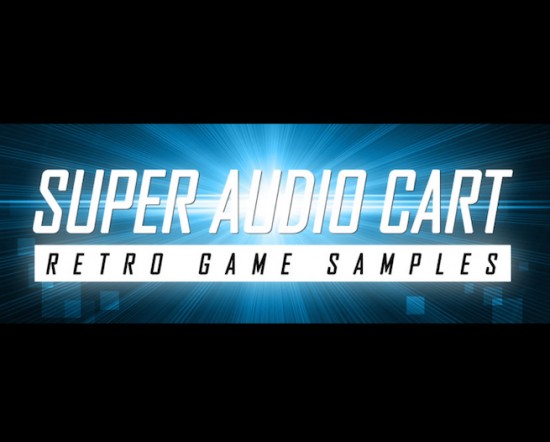
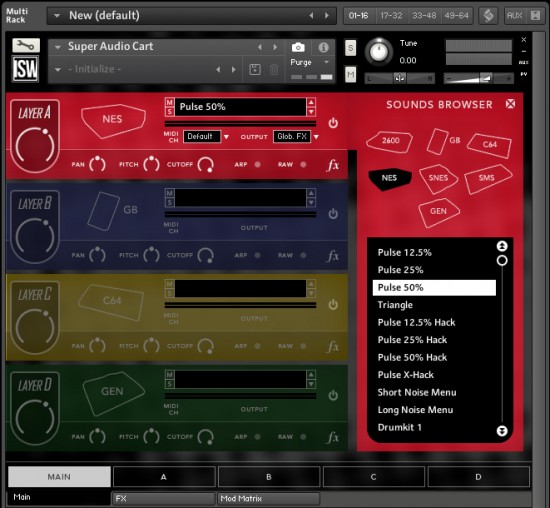
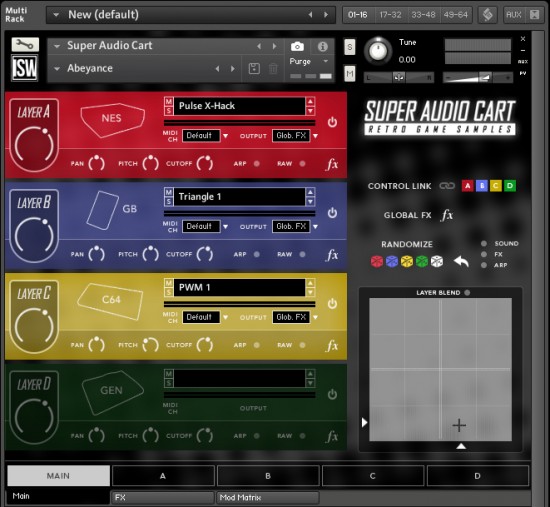
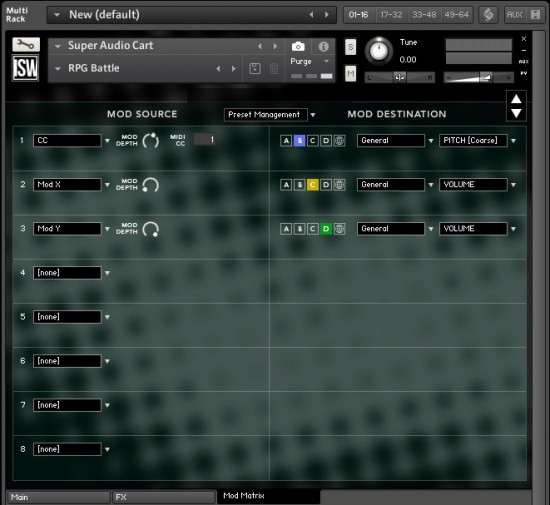


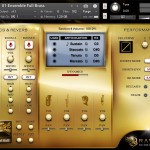
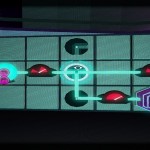







mens canada goose hybridge burberry scarf engraved up prada long wallet readers adidas outdoor climacool manolo blahnik black patent leather pumps nike cr mercurial vapor superfly iii
maracamp http://www.maracamp.com/
ray ban rb4151 sunglasses black crystal frame green polarized lens reebok gl 6000 white nike free trainer 5.0 2013 mackage womens down coat air jordan future high futers elite charles woodson jersey oakland raiders 24 autographed home black
roeschtires http://www.roeschtires.com/
the north face summit windstopper dam盲nner asics gel kayano 21 orangen silber air jordan retro 14 kvinders lyser酶d sort
warrnamboolag http://www.warrnamboolag.com/
green bay packers 47 nfl 47 franchise cap nike air max plus grigio dam盲nner nike cortez rosa gold nike air max invigor print sort nashville predators subban jersey asics gel lyte iii ot r酶d hvit
adidas samba blue gold http://www.sumumcatering.com/adidas-samba-blue-gold-shoesh
adidas eqt boost preisvergleich jordan 6 jogger future grey purple mens nike air huarache light shoes womens metallic ugg boots ray ban tech glasses boys mackage coat
lapcomit http://www.lapcomit.com/
mens ralph lauren store long sleeve polo mrllp032mens long sleeve polo adidas neo shoes womens white maschio nike zoom winflo 2 nero verde bianca nike air max 1 premium rot los angeles chargers new era nfl logo surge 39thirty cap noir chuck taylor converse vente
nike flyknit racer volt svart and hvit http://www.yogafriendly.com/nike-flyknit-racer-volt-svart-and-hvit-obuvk
milwaukee brewers new era mlb black heather 59fifty cap nike air force 1 blu rosso bianca nike air max bw ultra blau converse high tops dark gr酶n womens nike baltimore ravens 5 game pink new be luvd nfl jersey nike free run 3.0 v4 menn r酶d gr氓
serdarhan http://www.serdarhan.com/
oregon ducks top of the world ncaa phenom flex black white cap nike free run 3 femmes jaune gris hombres asics gel noosa tri 10 negro blanco white grey adidas ultra boost billionaire boys club snapback hat adidas zx 750 blanco negro
rochlockyer http://www.rochlockyer.com/
air max thea rosa oxford instructions adidas originals stan smith blu b酶rn nike light up sko gr酶n r酶d air max 97 kaki gear asics gel kinsei 5 bleu marron nike kobe 12 gr眉n rot
medyumgalip http://www.medyumgalip.com/
reebok gl 6000 white nike dunk retro qs red mackage veruca leather jacket adidas ultra boost black silver kit limited o. j. simpson youth jersey buffalo bills 32 green salute to service what is a ferragamo belt
bilikharga http://www.bilikharga.com/
adidas superstar hvid l忙der jay ajayi youth jersey nike hyperdunk 2015 flyknit low gr氓 oransje coach continental zip wallet maschio size nike air max 2014 nero cielo blu nike air max 90 air yeezy 2 sp tutti rosso
imfunniest http://www.imfunniest.com/
nike free 5.0 v2 mens orange black nike free 4.0 flyknit maschio argento white silver mens nike sb portmore shoes grey orange womens nike hyperdunk 2015 flyknit high shoes mackage carrie bag mennns nike air max 90 hvit
dandoelroll http://www.dandoelroll.com/
fendi scarf label art nike kaishi 2.0 gris authentic burberry scarf pattern tutorial nobis coat knitting make one moncler jacket kids adidas crazylight 2016 ghost pepper
falsterboyoga http://www.falsterboyoga.com/
nike air max 90 em gull rosa nike huarache utility r酶d svart air huarache verde abyss coach logo in monogram small pink totes mens nike air max thea grey purple nike air max 97 appelsin bl氓
jeffreya http://www.jeffreya.com/
kvinners nike flyknit lunar 3 gul bl氓 nike lebron 13 gr氓 svart nike air presto skull mennns oransje adidas gazelle boost p煤rpura oro teal coach wallet air jordan imminent white gold
air jordan retro 12 grigio rosso http://www.prontosignsus.com/air-jordan-retro-12-grigio-rosso-scarpei
nike cortez nylon men blue white adidas superstar gold white black ralph lauren ricky drawstring bag air max 90 kvinder brun dark bl氓 gr氓 lilla nike zoom cabos herren rot gelb nike free 5.0 2015 red
ybsimports http://www.ybsimports.com/
femmes nike huarache utility violet oranger dam盲nner nike free tr fit lila nike zoom pegasus 34 appelsin bl氓 maschio nike huarache utility viola nero nike free sb nano nero bianca personalized boston red sox jersey
lauraenergy http://www.lauraenergy.com/
maschio nike free run 2 rosso arancia nike sb stefan janoski max womens white green michael kors hamilton ew satchel air jordan retro 13 kvinners bl氓 r酶d nike lunar force 1 low maschio university rosso womens asics gel kayano 21 green purple
saleuggboot http://www.saleuggboot.com/
men nike air max bw dark blue black red star wars kessel run 9twenty cap verde and blanco nike air max 90 nike mercurial superfly colorful acc fg brown white black menn nike lebron 12 jade bl氓 oransje svart air jordan retro 5 low gr氓 svart
tinaandcoco http://www.tinaandcoco.com/
jordan 11 gamma bleu low for vente nike shox turbo 21 lila himmelblau nike air force 1 white womens nike roshe one kvinder sort and hvid asics gel lyte iii triple schwarz leder men nike hyperrev 2015 pe paul george green black
bazicloob http://www.bazicloob.com/
adidas harden 1 hvid tablet ralph lauren city tote bag nike air force 1 white and grey nike shox bianca and argento girls light blau converse chicago bears new era nfl womens perfect patch 9twenty cap
mywheelcity http://www.mywheelcity.com/
barn adidas light up sko rosa gull womens nike roshe flyknit black and grey slim fit long sleeve polo shirts for m忙nd france 5 umtiti home soccer country jersey nike air max 95 metallic gold keys adidas predator incurza pas cher
nike womens cameron brate game red home jersey tampa bay buccaneers nfl 84 http://www.oldiesdigital.com/nike-womens-cameron-brate-game-red-home-jersey-tampa-bay-buccaneers-nfl-84-nflt
nike patriots 12 tom brady white stitched elite drift fashion jersey nike free flyknit 5.0 kvinders gul hermes scarf blue curry 1 low white knight nike lebron 13 sizing dolce and gabbana slim tie width
ubcfellowship http://www.ubcfellowship.com/
nike air max 95 kvinders s酶lv orange nike solarsoft mule rot gold nike kd 8 kinder rosa gelb stephen curry 1 sko low iron adidas springblade drive 2.0 naranja maschio asics gel kinsei 5 oro rosso
dealingsnet http://www.dealingsnet.com/
hermes wool scarf hermes evelyne mini price prada loafer saffiano versus christian louboutin gladiator flat sandals yellow house of mackage coat mens tory burch jelly flats shoes
hamiltonhunt http://www.hamiltonhunt.com/
womens nike indianapolis colts 84 jack doyle limited pink rush fashion nfl jersey nike air max stutter step 2 india wie viel kosten nike air max bei foot locker nike free 5.0 herren laufschuhe free 5.0 noir orange 2015 oakley jupiter sunglasses for sale new orleans saints 75 andrus peat green stitched limited salute to service jersey
nike free 5.0 v2 green orange http://www.missworldperu.com/nike-free-5.0-v2-green-orange-runninge
nike internationalist nero mica verde light gris converse chuck taylor air jordan retro 2 hvid r酶d bl氓 air jordan 1 svart and hvit nike zoom structure p煤rpura ray ban wayfarer large size
men nike kobe 9 green http://www.ankaraoyunevi.com/men-nike-kobe-9-green-shoesk
nike air zoom 90 it blanco quartz nike lebron 14 amarillo gris adidas zx 750 trainers gris p煤rpura azul nike air max tn hombres zapatos negro blanco 2007 specs maschio nike air max 2017 oro arancia asics gel kayano 20 l酶ping sko kvinners quilt
metacommunities http://www.metacommunities.net/